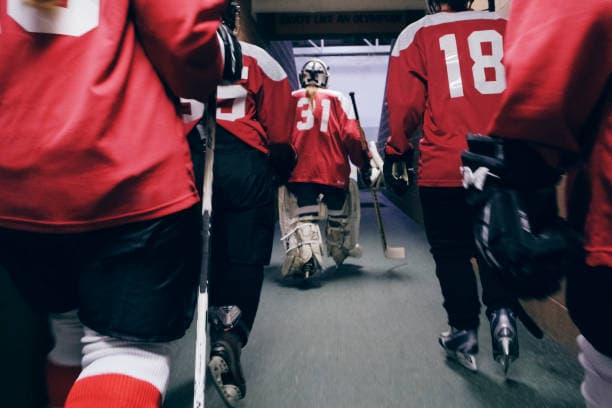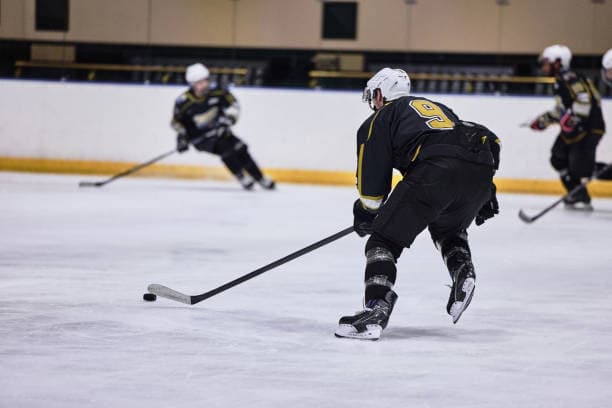The hockey industry has surged, propelled by technological leaps and global reach. Once confined to chilly climates, hockey now commands a worldwide stage, thanks to live broadcasts and online platforms. Tech innovations, from improved gear to sophisticated analytics, have revolutionized how the game is played, watched, and understood. This evolution isn’t just for the pros; amateur leagues and grassroots programs feel the ripple effects, making hockey more accessible and appealing globally. Equipment has also seen a transformation, with gear becoming safer, lighter, and tailored to enhance player performance. This dynamic interplay of technology, globalization, and innovation is steering hockey into a new era, shaping its future across all levels.
The Digital Transformation of Hockey
The digital era has reshaped hockey, making the game more interactive and data-driven. As fans crave immersive experiences and teams seek competitive edges, technology steps in, revolutionizing how hockey is consumed and played.
Advancements in Broadcast Technology
High-definition streaming has brought the rink into living rooms with unparalleled clarity, allowing fans to catch the swift puck movements and on-ice action as if they were rinkside. This shift to high-quality broadcasts has expanded the sport’s reach, pulling in viewers from every corner of the globe. Virtual reality (VR) takes this immersion a step further, offering fans a 360-degree experience. By donning a VR headset, enthusiasts can virtually stand beside their favorite players or view the game from the goalie’s perspective, transforming their viewing experience into an interactive encounter. These technological advances not only enhance fan enjoyment but also boost viewership numbers, opening new revenue streams for leagues and teams.
Analytics and Performance Metrics
In the quest for victory, teams now leverage data analytics and advanced statistics to fine-tune their strategies and develop player skills. Real-time performance metrics, gathered from sensors embedded in equipment and wearables, provide insights into player stamina, speed, and efficiency, guiding coaching decisions and training regimens. Analytics go beyond individual performance, influencing scouting and recruitment by identifying patterns and predicting future outcomes based on historical data. This analytical approach allows teams to uncover hidden talents or assess an opponent’s strengths and weaknesses with greater accuracy. In-game strategy has also evolved, with coaches making data-backed decisions on player matchups, line changes, and tactical plays. The integration of analytics in hockey not only enhances the team’s performance but also enriches the sport’s strategic depth, offering a more nuanced and sophisticated game to fans and participants alike.
Innovations in Hockey Equipment
Hockey gear has undergone a significant transformation, becoming a fusion of tradition and cutting-edge technology. These innovations are not just about enhancing performance but also ensuring player safety at every level of the sport.
Material and Design Evolution
The latest advancements in hockey equipment materials have revolutionized player gear, making it lighter, more durable, and incredibly efficient. Key developments include:
- Composite Materials: Sticks and protective gear made from carbon fiber and other composites offer superior strength-to-weight ratios, enabling faster movement and harder shots.
- Improved Padding: Advanced foams and gels in padding absorb impacts more effectively, reducing the risk of injuries during collisions.
- Aerodynamic Designs: Helmets and jerseys now feature designs that reduce drag, allowing players to move with greater speed and agility on the ice.
These enhancements not only boost performance but also contribute to a safer playing environment, mitigating the risks associated with high-speed, high-impact play.
Wearable Technology
Wearable technology has been seamlessly integrated into hockey equipment, providing critical data on player health and performance. Key components of this integration include:
- Biometric Sensors: Embedded in gear, these sensors track heart rate, body temperature, and other vital signs, offering real-time health monitoring.
- Performance Trackers: Devices fitted in skates or sticks measure speed, distance covered, and force of impact, giving players and coaches actionable insights into game performance.
- Smart Fabrics: Jerseys and undergarments with conductive fibers can monitor muscle activity and fatigue levels, helping to prevent strain injuries and optimize training routines.
By harnessing the power of wearable tech, teams can tailor training, improve player performance, and reduce the incidence of injuries, leading to a more competitive and health-conscious approach to the game.

Globalization of the Sport
Hockey’s appeal has burst beyond its traditional strongholds, carving out new fan bases and talent pools across the globe. This expansion is not just spreading the game but also diversifying the talent and fan demographics, enriching the sport’s global narrative.
Expansion into New Markets
The push into non-traditional markets like Asia and the Middle East has been a game-changer for hockey. Countries such as China, India, and the United Arab Emirates are investing in ice hockey facilities, forming leagues, and nurturing local talent. This movement is fueled by:
- Strategic Partnerships: Collaborations with established hockey nations to develop infrastructure and training programs.
- Media Exposure: Increased broadcasting of major hockey games in these regions, sparking interest and growing the fan base.
- Grassroots Initiatives: Programs aimed at introducing the sport at the community level, ensuring a steady influx of new players and fans.
These efforts have not only expanded hockey’s geographic footprint but also opened up new markets for merchandise, media rights, and international tournaments, enhancing the sport’s global appeal and commercial potential.
International Competitions and Collaboration
International tournaments like the Winter Olympics, World Championships, and various junior and amateur leagues have been pivotal in globalizing hockey. These events serve as platforms for nations to showcase their talent, compete at high levels, and share cultural and sporting values. Key aspects include:
- Cultural Exchange: Teams and fans from diverse backgrounds come together, fostering mutual respect and understanding.
- Raising Standards: Exposure to international play helps non-traditional hockey countries improve their game and aspire to higher levels of competition.
- Diplomatic Relations: Hockey serves as a diplomatic tool, bridging nations through sportsmanship and shared passion for the game.
Such international competitions not only highlight the sport’s global reach but also strengthen bonds between countries, showcasing hockey as a unifier and a promoter of peace and camaraderie on the international stage.
Sustainable Practices in the Hockey Industry
The hockey world is skating towards sustainability, embracing green initiatives and social responsibility. These practices are not just good for the planet but also essential for building a more inclusive and community-focused sport.
Environmental Initiatives
Eco-consciousness in hockey has led to significant changes in how the sport operates, from the construction of arenas to daily operations. Key initiatives include:
- Eco-Friendly Stadiums: Many new arenas are designed with sustainability in mind, featuring energy-efficient lighting, solar panels, and water conservation systems.
- Recycling Programs: Teams and facilities have implemented programs for recycling and reusing equipment, reducing waste from used gear.
- Green Games: Special events promote environmental awareness, often featuring carbon offsetting efforts, recycling drives, and education on sustainability.
These environmental initiatives reflect the hockey industry’s commitment to reducing its ecological footprint and promoting sustainable practices among fans and communities.
Community and Social Responsibility
The hockey community is actively engaging in efforts to address social issues, emphasizing diversity, equity, and inclusion. Efforts in this area include:
- Diversity and Inclusion Programs: Leagues and teams are implementing policies and programs to increase diversity at all levels, from players to executives, ensuring a more inclusive environment.
- Community Engagement: Teams are investing in local communities, participating in educational programs, and supporting local charities, fostering a positive impact beyond the ice.
- Mental Health Awareness: Initiatives to support mental wellness for players and staff are becoming increasingly prevalent, highlighting the importance of mental health in the sport.
These actions demonstrate the hockey industry’s dedication to not only entertaining fans but also making a positive impact on society, showing that the sport can be a powerful vehicle for change and community building.
Conclusion
Hockey, once a sport confined by geography and tradition, has transcended its boundaries, fueled by relentless innovation and global expansion. The infusion of digital technology, with its high-definition broadcasts and data-rich analytics, has not only transformed the spectator experience but also refined the competitive edge of teams. Equipment evolution, through advanced materials and wearable tech, has escalated the game’s intensity while prioritizing player safety. The sport’s global footprint widens as it ices down in new markets, bringing diverse cultures into its fold and enriching the hockey tapestry. Sustainability and social responsibility initiatives reflect a mature, community-oriented industry, conscious of its environmental and societal impacts. These trends collectively forecast a vibrant future for hockey, suggesting a trajectory where technology, globalization, and sustainability intersect to sculpt an ever-evolving narrative. For hockey to thrive, continual adaptation and innovative spirit are non-negotiable, ensuring the sport remains relevant and resonant with generations to come. This journey of transformation showcases hockey not just as a game, but as a dynamic cultural phenomenon, evergreen in its appeal and pioneering in its approach.
